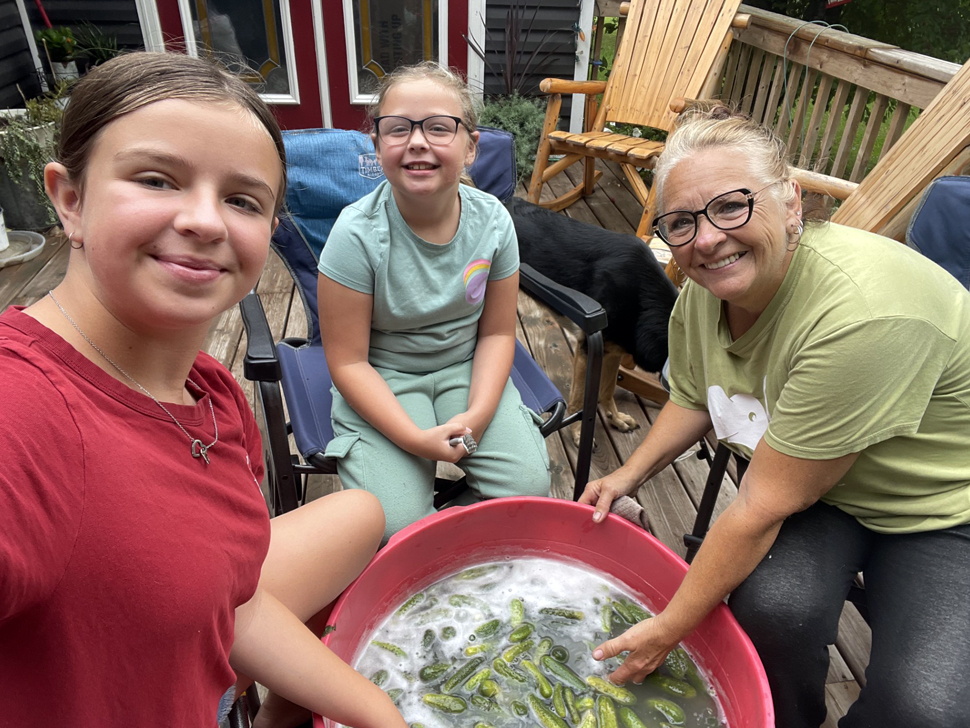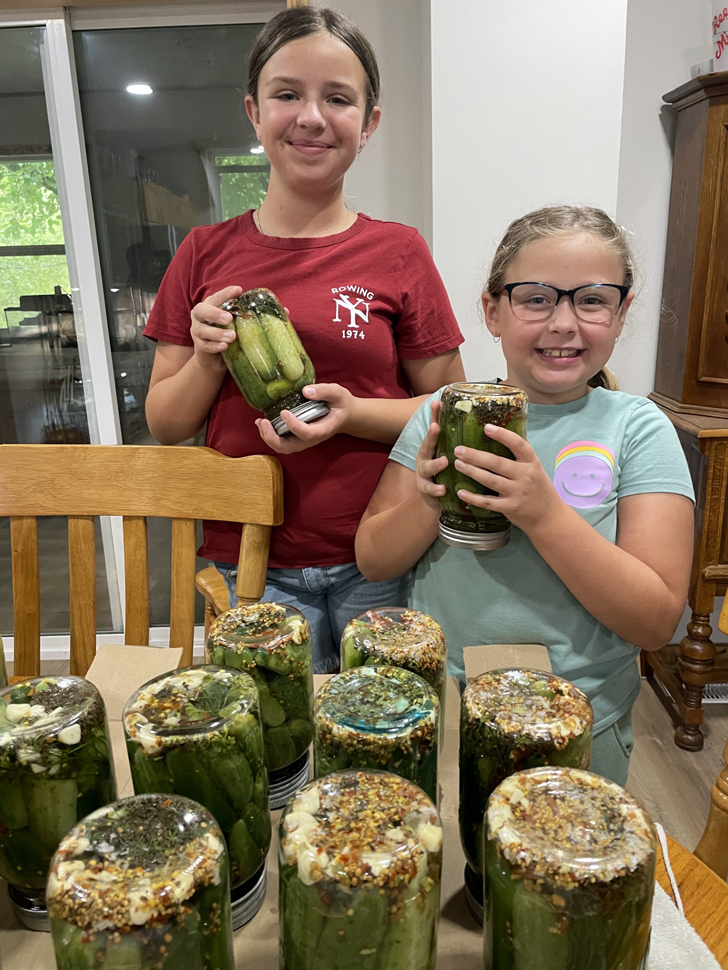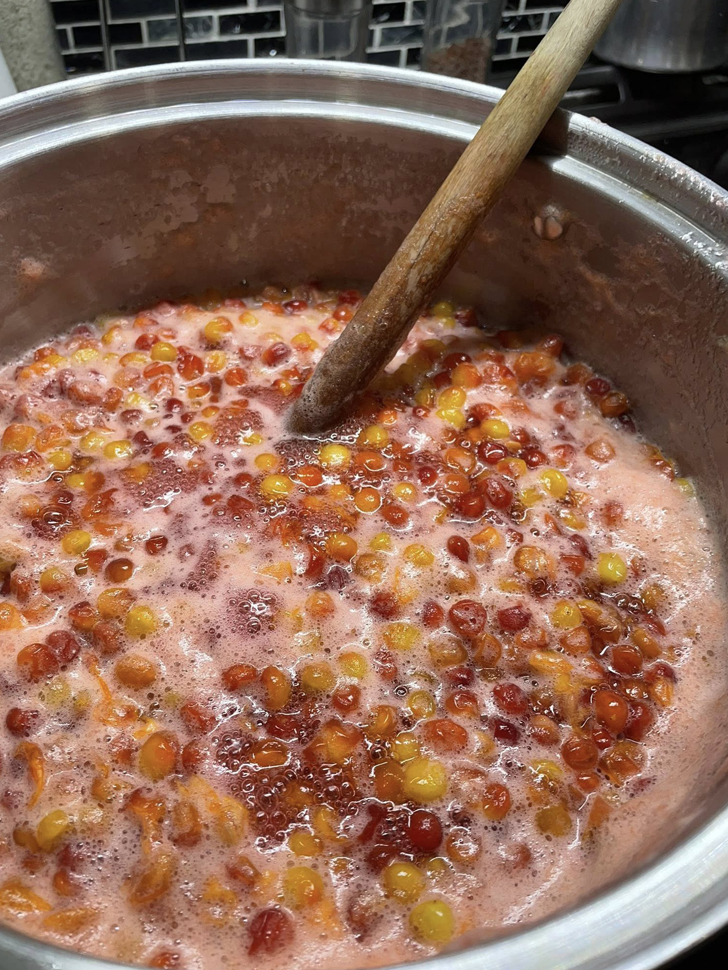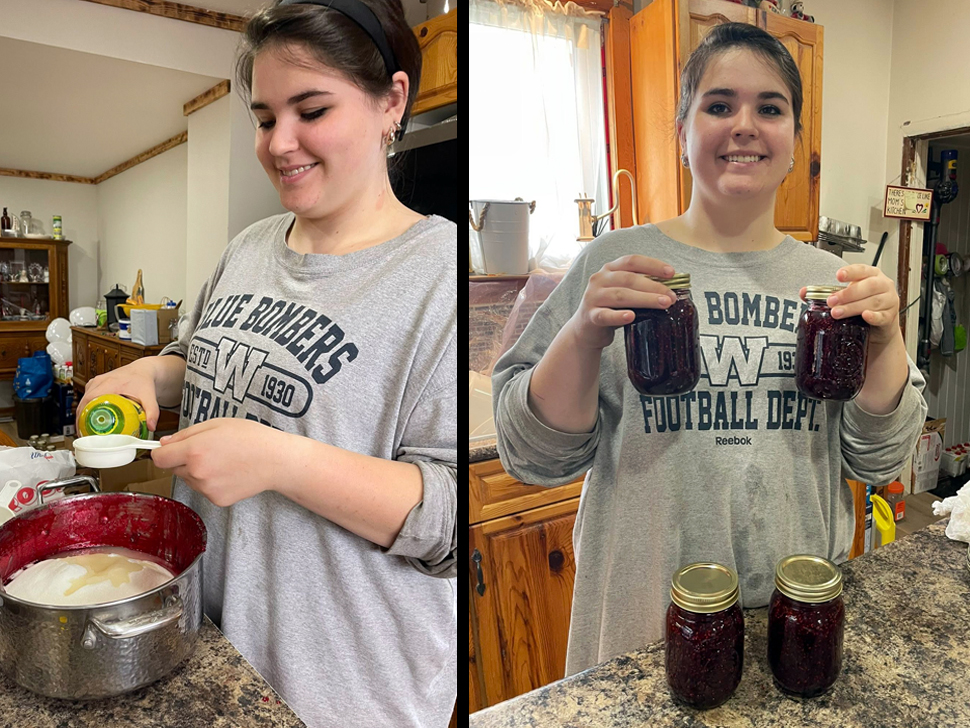For Michelle Gawronsky, the Reeve of the Rural Municipality of Stuartburn, the value of canning food goes far beyond saving money or stocking the pantry. It’s about family, tradition and passing on skills to younger generations.
“I remember helping my mom. That’s 50 years ago for sure,” said Gawronsky. “We were not a well-off family, and so you canned and preserved everything you possibly could to try and alleviate high expenses through the winter. If you canned it, you knew what was in it, you knew where it came from, and you knew there were no chemicals in it.”
A tradition handed down
Gawronsky continues that tradition today, with her sons taking a particular interest in pickles, and now her granddaughters joining in as well. This year, one of the girls made her first raspberry jam by herself, Gawronsky said. “So I’m pretty proud of that.”
For her, opening a jar of homemade jam isn’t just about taste — it brings back vivid memories. Gawronsky recalls the first time she tried what she calls “tri-berry jam,” a recipe passed down from her great-grandmother in Flin Flon.
“Whenever I taste it, I can hear the waters of the lakes, I can smell the spruce trees, I can smell great-grandma's house,” she said. “To this day, when I open a jar in the winter, I still make homemade bread so I can enjoy that first slice with jam. It’s such a warm, wonderful feeling.”
Family unity through food
Canning days are more than kitchen work. For Gawronsky, they are moments of laughter, storytelling, and togetherness.

“We usually make about 140 jars of pickles every year,” she said. “There’s the smell of dill, garlic, vinegar, the sound of everyone washing cucumbers outside in tubs. It brings such family unity, and that’s what we’re missing in society today.”
Those memories are often tied to aromas filling the home. Gawronsky describes the first snowstorm of the year, when she makes chicken noodle soup and fresh bread, followed by bread and jam for dessert.
“My kids knew that when they got off the bus on the first snow day, that’s what they were coming home to,” she said.
Passing on the knowledge
For Gawronsky, teaching the next generation is as important as preserving food itself. She sees the pride her granddaughters feel when they see and taste the result of their hard work, and she recognizes how valuable those moments are.

“To have the values set and the pride in themselves is one of the things that the young generation is missing today,” said Gawronsky. “Canning brings families together. It gives you that sense of accomplishment and the pride of knowing you can do it.”
A recipe with deep roots
This year, Gawronsky tried something new: a Ukrainian recipe for high-bush cranberry jelly, also known as kalyna. She first learned about it decades ago from women she worked with in Vita and, years later, was given the family recipe by a local grandmother.
“The pride that I felt when I made my first jar and it actually set — I was thrilled,” she said. “You get that sense of accomplishment, the calm of being in the bush picking the berries, and the excitement of trying something new. When it works out, it’s just such a wonderful feeling.”
“Kalyna” - Cranberry Jelly, shared by Michelle Gawronsky
- Wash fruit
- Put into pot, add just enough water to cover
- Bring to a boil on high heat, reduce temperature and cook until fruit is soft
- Put through the sieve
- Measure juice (1 cup juice for 1 cup sugar)
- Bring juice to boil, boil for 3 minutes, add sugar, boil until jelly stage (when dropped in cold water, it forms a ball)
- Put into jars and seal

More than food in a jar
For Gawronsky, canning isn’t just about preserving food — it’s about preserving stories, traditions and relationships.
“You know, when I went to an 80-year-old woman at 66 to get a recipe, and then I passed it down to my 15-year-old granddaughter, that’s three generations connected,” she said. “It brings people together. It gives everyone a sense of purpose and pride, and that’s something we need more of today.”
